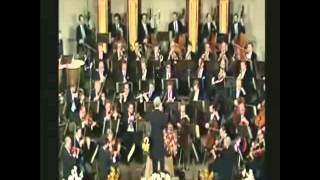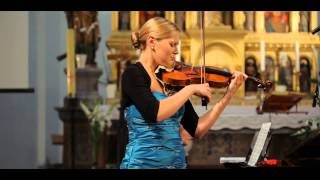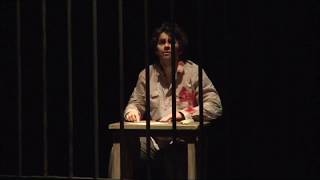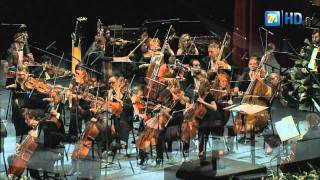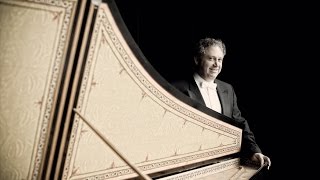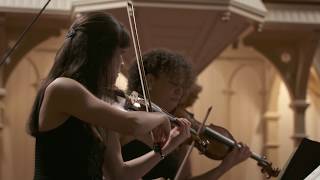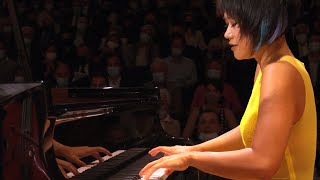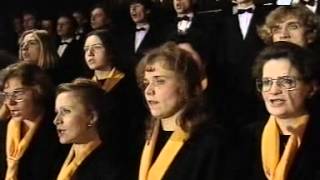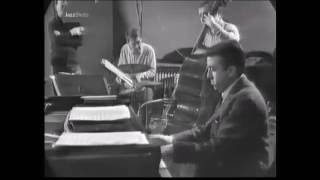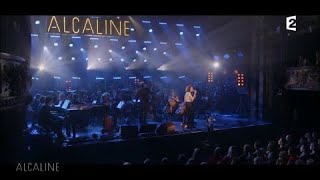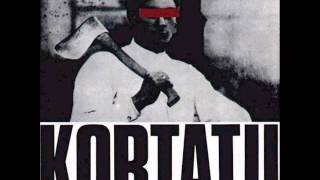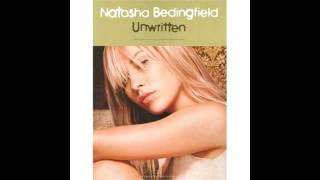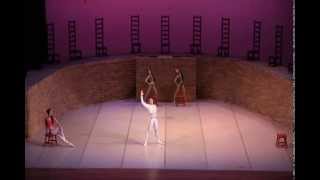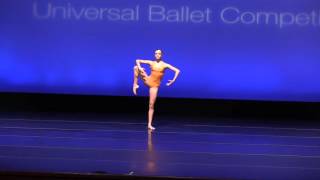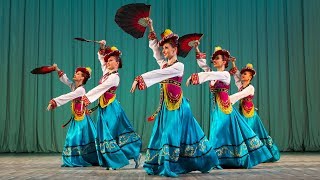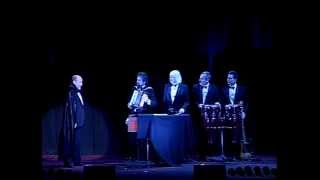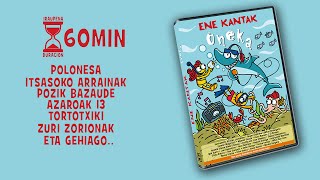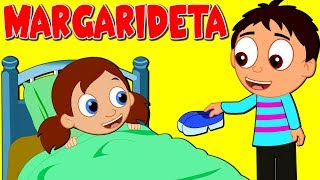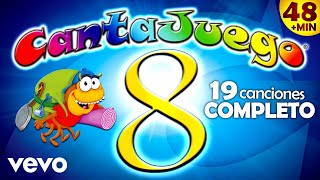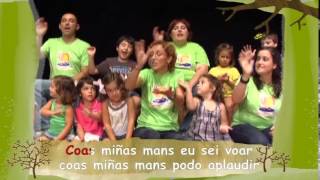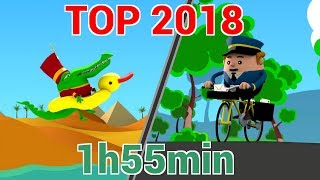Recommended music videos for initiation to classical music
Johann Strauss Jr. (1825-1899) was an Austrian composer, son of Johann Strauss and brother of composers Josef Strauss and Eduard Strauss ; Known in life as “the king of the waltz”, he was an essential factor in its evolution and sophistication, going from being a peasant dance to an entertainment dance for the Imperial Court . He is the best known of the family for his waltzes, his polkas and his marches; composer, in addition, of several operettas. His father wanted to prevent his son from going through the straits of a musician's life, so it was his mother who helped him and encouraged him to focus on music. His work forms the basis of the repertoire offered annually at the Vienna Philharmonic Orchestra 's New Year's Concert .
The polka (or polka) is a popular dance that appeared in Bohemia (now the Czech Republic ) around 1830, which began to become popular in Prague from 1835. Its music is written in 2/4 time and fast time; it is danced with lateral steps and rapid evolutions; It became very popular in Europe and America . Today, from the New Year's Concert , the Vienna Philharmonic conducted by the Austrian maestro Willi Boskovsky offers us Johann Strauss II 's polka Auf der Jagd!.
Antonín Dvořák (1841-1904) was born in Nelahozeves , then Bohemia and now the Czech Republic , and is considered one of the great masters of the second half of the 19th century and a leading representative of Czech nationalism. In 1847 he entered the primary school of his town, where he received his first musical lessons. During the 1860s he played viola in the Orchestra of the Bohemian Provisional Theater , conducted from 1866 by Bedřich Smetana . In 1873 he was exalted with all kinds of important international awards for his collection of Slavonic Dances . Throughout his life he wrote abundant vocal, chamber, symphonic and operatic music. His New World Symphony is a well-known work and its themes have been widely used in popular music.
Song My Mother Taught Me ("Songs my mother taught me") is a song for voice and piano written in 1880 by Antonín Dvořák . It is the fourth of seven songs in his Gypsy Songs cycle, a cycle of gypsy songs set to poems by Adolf Heyduk in both Czech and German. This particular song has achieved great fame and has been recorded by several very relevant singers such as Victoria de los Ángeles, Joan Sutherland, Paul Robeson, Frederica von Stade, Edita Gruberová, Angela Gheorghiu, Magdalena Kožená or Renée Fleming . The song has also been transcribed into different instrumental combinations, as on this occasion in which it is offered to us by Tanja Sonc on violin accompanied by Božena Hrup on piano.
Giacomo Puccini (1858-1924) was an Italian opera composer, considered among the greatest, of the late 19th and early 20th centuries . He was a visionary, creator of the music concepts that would govern cinema during the 20th century ; for him, the use of modal passages or polytonal resources and tonality or atonality were matters of effect that were defined by the dramatic needs of the work. For example, in Tosca , the way in which the text is replaced by musical passages anticipates the action that is about to take place, in the best way of Alfred Hitchcock in his suspense films. Another example is in La Bohème , when Mimi 's theme is heard before she appears on stage. He is considered the successor to Giuseppe Verdi .
E lucevan le stelle (And the stars shone) is a famous aria for tenor from the opera Tosca , composed by Giacomo Puccini . It is an elegiac composition of the third final act, where the protagonist, the republican painter and sympathizer of liberal ideas, Mario Cavaradossi , begins with a melancholic and desolate clarinet solo as dawn breaks. Cavaradossi evokes the intimate moments spent with his lover, the diva Floria Tosca , and sings the aria during his stay as a prisoner in Castel Sant'Angelo (Rome), the stars slowly dissipate and in a few moments the jailer calls him for his imminent execution .
Andeka Gorrotxategi born in Abadiño , Bizkaia, began her vocal training at the Durango Conservatory and later moved to Bilbao, Madrid, Marseille, Paris, Rome and the US where she expanded her vocal training with teachers such as Agurtzane Mentxaka, Ana Begoña Hernandez, Francisco Ortiz, Elisabetta Fiorillo or Francisco Casanova . His debut as Pinkerton in Madama Butterfly in Novara 2011 , propelled his career into a dizzying tone with his “brave and luminous” voice. For many, he is the new Franco Corelli , due to his lyrical-spinto repertoire and his beautiful, bronzed voice, which has led him to perform on the most prestigious stages in the world.
José Pablo Moncayo (1912-1958) was a Mexican composer, who represents one of the most important musical legacies of Mexican nationalism, along with Silvestre Revueltas, Carlos Chávez and Julián Carrillo . His teachers were Candelario Huízar and Carlos Chávez , of harmony and composition respectively. In his student days, he was forced to play as a pianist in cafes and radio stations in order to pay for his studies, until he joined the National Symphony Orchestra as a percussionist. According to Yolanda Moreno Rivas : " Moncayo 's death in 1958 ended with the preponderance of a composition style, whose footprint marked musical creation in Mexico for more than three decades."
Huapango is Moncayo 's best known work, to such an extent that in said country it has been called the second Mexican National Anthem ; is a work inspired by the Veracruz sones that he studied during a visit to the port of Alvarado , Veracruz , and which includes melodic and rhythmic motifs of various sones among which are the most evident "El Siquisiri", "El Balajú" and "El Gavilancito " .
Today it is conducted by Alondra de la Parra (1980), an internationally renowned Mexican conductor who is currently head of the Queensland Symphony Orchestra ; She has been the first woman in Australia to hold a position in this entity.
Recommended classical music videos
Franz Joseph Haydn (1732-1809), Austrian composer whose brother Michael Haydn was also a notable composer, was one of the main pillars on which classicism (1750-1820) was based. At the age of six he began his studies on the harpsichord and violin. At the age of eight he was admitted as a chorister at St. Stephen's Cathedral in Vienna where he continued his musical studies. After changing his voice, he had to survive by working multiple jobs, while studying composition by analyzing the works of Carl Philipp Emanuel Bach . He maintained a close friendship with Mozart and was a teacher of Beethoven . He established the main bases of the sonata form and the formal structure of the string quartet and the symphony. He died at the age of 77 in Vienna .
Symphony No. 101 in D Major is the ninth of twelve so-called London Symphonies , composed by Joseph Haydn . It is popularly known as the Clock Symphony due to the ticking rhythm of the second movement (8'55''). Haydn composed it for his second visit to London (1794-1795). As with his London Symphonies , the public response was very enthusiastic. The work has always been popular and continues to appear frequently in concert programs and on recordings in the international repertoire. The symphony is structured in four movements: I (0´33´´) ADAGIO – (2´20´´) PRESTO .-. II (8´55´´) ANDANTE .-. III (16´35´´) MENUETTO: ALLEGRETTO .-. IV (24´00´´) VIVACE. Today it is offered to us by the Galician Symphony under the baton of the British maestro Richard Egarr .
Johannes Brahms (1833-1897) born in Vienna where he spent most of his life, was the composer of the most conservative romanticism compared to the progressive current led by Liszt and Wagner . His music is firmly rooted in the compositional structures and techniques of the classical masters and its formal structures faithfully follow the patterns of classicism, although it uses some of the coloring of romanticism and popular music. Of an eminently perfectionist nature, he wrote for piano, chamber ensembles, symphony orchestra, for solo voices and for choir. It was Hans von Bulow who proposed the "three B's" referring to Bach , Beethoven and Brahms as the three main pillars of the History of music .
Johannes Brahms ' String Quartet No. 1 and String Quartet No. 2 were completed during the summer of 1873, and published as Op. 51 . He was 40 years old at the time of publication; and it is that Brahms considered the string quartet as a particularly important genre. He reportedly destroyed some twenty string quartets before allowing the two Op. 51s to be published. The String Quartet No. 1 is notable for its organic unity and consists of four movements: I (0´22´´) ALLEGRO (C minor, ending in C major) .-. II (8´51´´) ROMANCE: LITTLE ADAGIO (A♭major) .-. III (15´41´´) ALLEGRETTO MOLTO MODERATO E COMODO (F minor, ends in F major) .-. IV (25´04´´) FINALE: ALLEGRO (C minor). Today the GoYa Quartet visualizes it for us.
Sergei Rachmaninoff (1873-1943) was a Russian pianist, conductor, and composer born into an aristocratic family of musicians; He began playing the piano at the age of four, formalizing his studies at the Saint Petersburg Conservatory and later at the Moscow Conservatory. After the premiere of his First Symphony and the criticism received, he suffered a creative crisis for four years. Once surpassed, he wrote the Piano Concerto No. 2 , which received worldwide recognition and fame. After the Russian revolution, he moved with his family to Switzerland and, in 1935, to the USA , writing numerous works for piano solo and concertante, chamber music, symphonic and lyric. He is considered one of the most influential pianists of the 20th century and one of the most representative Russian composers.
The Piano Concerto No. 2 , op. 18 in C minor, is a piece composed for piano and orchestra by Sergei Rachmaninov between the autumn of 1900 and April 1901. The complete work was premiered with the composer as soloist, on October 27, 1901, with his cousin Aleksandr Ziloti at the baton. I (0´50´´) MODERATE .-. II (12´37´´) ADAGIO SOSTENUTO .-. III (23'55'') ALLEGRO SCHERZANDO. Today it is offered to us by the internationally renowned Venezuelan pianist Gabriela Montero accompanied by the Simón Bolívar Symphony Orchestra conducted by Eduardo Marturet .
Ariel Ramírez (1921-2010) is one of the most relevant figures of Argentine nativism. He studied piano and composition and at the age of 20, encouraged by Atahualpa Yupanqui , he traveled throughout the country contacting the different musical expressions of each region. Nine years later he made a four-year trip through Europe offering various concerts of music from his land; on his return to Argentina he formed a company made up of musicians and dancers with which he would tour the country for 20 years; after this stage he performed as a piano soloist in countless recitals in which he interspersed his own works.
Creole Mass. Among the numerous songs and works that he wrote, it is worth noting the Creole Mass that we offer today; musical work of a religious and folkloric nature with translated and adapted liturgical texts. The work, although it strictly follows the most orthodox Catholic liturgical plan, acquires a great singularity through the use of traditional musical rhythms from Argentina . Its structure is made up of five movements, each of which is a replica of some rhythm or traditional musical form from Argentina : I (0'00) KYRIE (vidala-baguala) .-. II (3´52´´) GLORIA (carnavalito-yaraví) .-. III (10´13´´) CREDO (truncated chacarera) .-. IV (13´54´´) SANCTUS (cochabambino carnival) .-. V (16´26´´) AGNUS DEI (pampas style).
Today it is presented to us by the tenor Zampa Quilpidor with the Polish choir Warszawski Chór Międzyuczelniany accompanied on piano by the composer himself Ariel Ramírez and the Andes Quartet directed by all of maestro Janusz Dąbrowski.
Recommended music videos for all tastes
Wes Montgomery (1923 - 1968), brother of pianist and vibraphonist Buddy Montgomery and bassist Monk Montgomery , was an American jazz guitarist, within the hard bop style (a jazz musical style that chronologically follows cool and precedes the jazz avant-garde). ). He begins playing at the 440 Club in his hometown, as well as with his brothers' band called The Montgomery Brothers , until he is called by Lionel Hampton ; he then played with the John Coltrane Sextet. The realization of his album The Incredible Jazz Guitar of Wes Montgomery , published by the Riverside label in 1960, brought him fame within the world of jazz. Montgomery exerted a great influence on later guitarists, such as Pat Martino, Emily Remler or George Benson .
Birkin Jane (London 1946) Anglo-French singer and actress. After his cinematographic beginnings in England , at the end of the sixties he settled in France thanks to the support of his future partner, the singer, composer and film director Serge Gainsbourg . Her presentation in Paris was done precisely with songs by Gainsbourg written for her, songs that would be added throughout her career. Today we attend a public recital accompanied by the Lamoureux Symphony Orchestra under the baton of maestro Didier Benetti .
Kortatu was a Basque musical group founded in 1984 in Irún (Gipuzkoa). They were part of the so-called Basque radical rock and were pioneers in introducing ska in the Spanish state, always with a punk base in the background. His main influences were the British group The Clash and the Basque group Hertzainak . His lyrics initially alternated between Spanish and Basque, to end up exclusively adopting the latter. Although they had a close relationship with the autonomous movement, they never hid their sympathy for the nationalist left. For example, their song " Sarri, Sarri " is dedicated to the escape of the writer and ETA prisoner Joseba Sarrionandia , after hiding in the loudspeakers used at a concert by Imanol Larzabal held in the Martutene prison.
Natasha Bedingfield (1981) She is an English singer who debuted in 1990, at the age of nine, as a member of a Christian dance/electronic group ; Throughout that decade he made various recordings for religious institutions. In 2004 he released his first album, Unwritten , an album that we are suggesting today, with sales of more than two million copies and which earned him a Grammy Award . During these years he has toured Europe and the USA and released different singles, while he continues preparing his fourth album.
Recommended peculiar videos
Georges Bizet (1836-1875) French pianist and composer who did not achieve much success during his lifetime. His best-known opera, Carmen , achieved a sensational success at its premiere that he did not enjoy as he died three months later of a heart attack at the age of 39. The rest of his works were put aside and rescued little by little in the 20th century . Despite this, he is now regarded as a brilliant and imaginative composer.
Rodion Shchedrin (1932) is a Russian pianist and composer born into a family of musicians. He was president of the Union of Composers of Russia and recognized as a member of the Berlin Academy of Arts ; in 1992 he received the Russian State Prize . In 1967 he produced a suite with the most relevant themes from the opera Carmen for string orchestra and extensive percussion with which Alberto Alonso created a ballet in one act.
Carmen, suite . Today we can see it performed by the National Ballet of Cuba , a company founded on October 28, 1948 under the name of Alicia Alonso Ballet . In 1950 the Alicia Alonso National Ballet Academy was founded and from that same year Alicia began to premiere her own choreographies in the company; in 1955 the company was renamed Ballet de Cuba . When the triumph of the Cuban revolution took place in 1959, the company was reorganized after a period of inactivity and assumed the name of the National Ballet of Cuba . On March 24, 1980, Unesco organized an International Gala in Paris in honor of Alicia Alonso . In 1993 the Alicia Alonso Chair of Dance was created at the Complutense University of Madrid .
Fur Elise (For Elisa), a trifle written for solo piano, is one of Beethoven 's most popular works. The score was released 40 years after the death of the teacher, after his manuscript was found among the papers of a former student. It seems that there was a confusion due to the reading difficulties that the title had and that instead of "Fur Elise", what was written was "Fur Therese"; which is how the little work should be titled.
The scenery is in charge of the young dancer Vivian Ruiz (2001) born in Florida , USA, and winner of first prizes in multiple competitions.
Dance in Korea . The beginnings of the dance in Korea are believed to date back at least 5,000 years, originating from ancient shamanic rituals. During the time of the Three Kingdoms the first signs of Korean dance are perceived. By the time of the later Korean kingdoms, the dance benefited from regular support from the royal court, numerous academies were created, and there was even an official government ministry dedicated to dance. There is a wide variety of dance in Korea today, ranging from courtly and folk dance to newly created contemporary dance.
The Igor Moiseyev Ballet born from the bowels of the Bolshoi Theater in Moscow is one of the great ballet companies in the world that manages to synthesize the spontaneity of popular dances with the academicism of classical ballet, and today stages the popular Sancheonga dance with the usual choreographic rigor and respect for the roots and habits of Korean folklore.
Les Luthiers is an Argentine musical-humorous group, very popular in their country and in other Spanish-speaking countries. The ensemble uses music as a fundamental element of its performances, frequently incorporating informal instruments created from everyday materials. From this characteristic comes its name, luthier , a French language word that designates the creator, adjuster and manager of the repair of stringed musical instruments. They have been recognized with illustrious distinctions both in their native Argentina , as well as in Spain and the USA .
Recommended music videos for children
Various Wikipedia articles have been used to write these texts.
The texts of Videomusicalis are written in Basque, Spanish and English.





